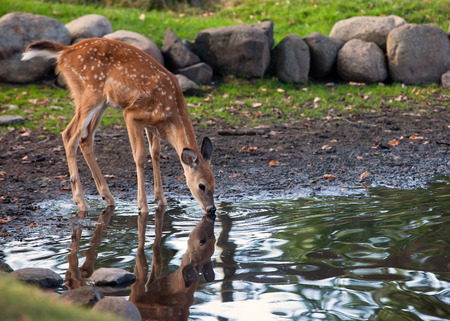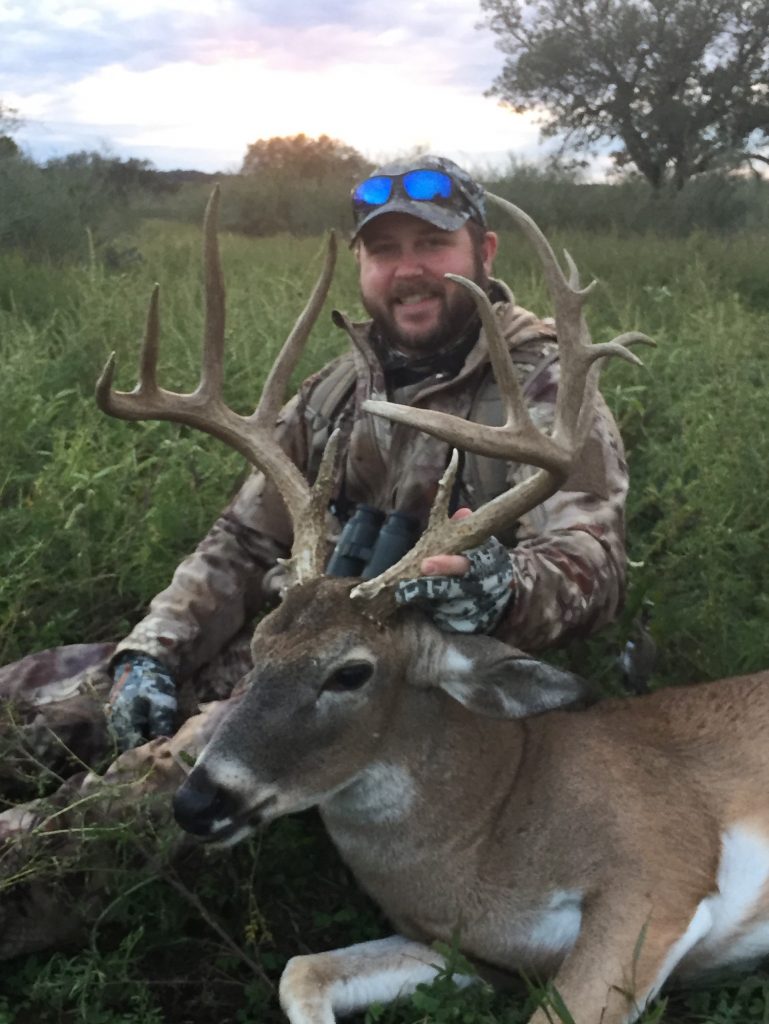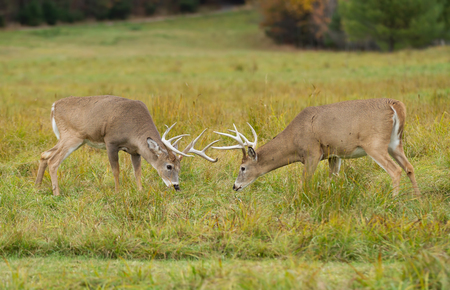Whitetail deer can be found in the United States, Canada, Mexico, parts of South America and even in tropical locations like Cuba, Jamaica and the Bahamas.
In spite of how widespread whitetail populations are, there are many people who don’t know a whole lot about this increasingly popular game.
Here are some little-known facts about the whitetail deer:
1. Whitetail are fast learners
 It doesn’t take fawn long to get up and moving around after they’re born.
It doesn’t take fawn long to get up and moving around after they’re born.
Within just 20 minutes of being born, a whitetail deer can stand. It can then walk within about 60 minutes and run within 24 hours. By the time a whitetail deer is just five days old, it’s able to run faster than the average human.
As you can see, deer learn quickly when it comes to finding their legs.
2. They can run 30 miles per hour
The whitetail deer can reach 30 miles per hour when attempting to outrun a predator. They can leap 10 feet high and travel 30 feet in just one bound.
3. They have a hefty diet
The whitetail deer needs to eat an abundance of vegetation throughout the course of a day.
On average, a whitetail deer needs to eat approximately eight pounds of vegetation for every 100 pounds it weighs. This is why whitetail deer spend most of their waking hours rummaging scouring for food.
4. They need their beauty sleep—and tons of it
Although whitetail deer need to eat a lot to survive, they spend the majority of their days bedded.
They rest for about 60 to 70 percent of the day and only stop resting when they need to eat or urinate. They can even defecate while bedded. It’s no wonder why it can be difficult to spot wandering whitetail deer when you’re out on a hunt.
5. Chin whiskers help them eat
Those whiskers around the whitetail deer’s chin aren’t just for show. These fine hairs help them gage the distance between their mouth and the ground.
6. Buck antlers have a fast growth rate
 In the spring, adult buck antlers will start to appear, growing about a quarter-inch a day.
In the spring, adult buck antlers will start to appear, growing about a quarter-inch a day.
The quality of whitetail deer antlers is determined by their diet and age, with their shape and arrangement coming solely from their genetics.
7. Antlers help you determine health
Normally, a buck will shed his antlers in the winter, growing them back to full strength in the spring and summer months.
However, if you notice a buck’s antlers have shed or are broken during the warmer seasons, this is a sign that their overall health is declining—not the hunter’s most ideal trophy according to the Boone and Crockett scale.
8. Bucks travel far distances during the rut
When it’s mating season, a whitetail buck will travel far and wide to find his mate.
It’s said that a male could lose as much as 25 percent of its body weight due to the miles they travel during the rut.
9. Their vision is better at night
Due to the fact that these deer have more rods in their eyes than cones, this game can see much clearer in darker conditions. They can identify shapes easier and more accurately, making whitetail deer hunting in Texas a daytime sport.
10. But bright colors aren’t their forte
Although they may have some excellent night vision, whitetail deer struggle with bright colors.
Vibrant colors translate into shades of gray in their eyes, again easier to see in the dark and tough to identify during the day.
This means that hunters can easily wear bright orange vests and hats with their camo, and they’ll stay undetected (as long as you’re careful). We encourage all of our hunters to wear some form of orange so they can be easily spotted by fellow huntsmen.
11. Their tails are a means of communication…
 It’s true!
It’s true!
Whitetail deer can send messages with their tail.
- Tail twitch: the deer is relaxing
- Tail swish: the deer is at ease
- Tail flick: the deer is surprised or aware
- Tail at half-mast: the deer is on high-alert
- Tail standing rigid: the deer is sensing danger and getting ready to flee
12. …and also where they got their whitetail name from!
The whitetail deer got their name from the white underside of their tails. When he raises his tail while on alert, is when you can see it best.
13. They can detect a human’s odor even after you’re gone
Whitetails have a powerful nose. So powerful that they can identify human odor even after they leave a certain area.
If they catch even a whiff of human scent, they will avoid that area until they are certain that it’s clear of predators.
14. Whitetails rest by the water
Just like their diet, whitetail deer need to consume a generous amount of water throughout the day. In order to do so, they like to stay and rest by bodies of water of various sizes.
Interested in joining us on a Texas whitetail hunt? Give us a call at 325-347-2613 or contact us online to book your reservation today!